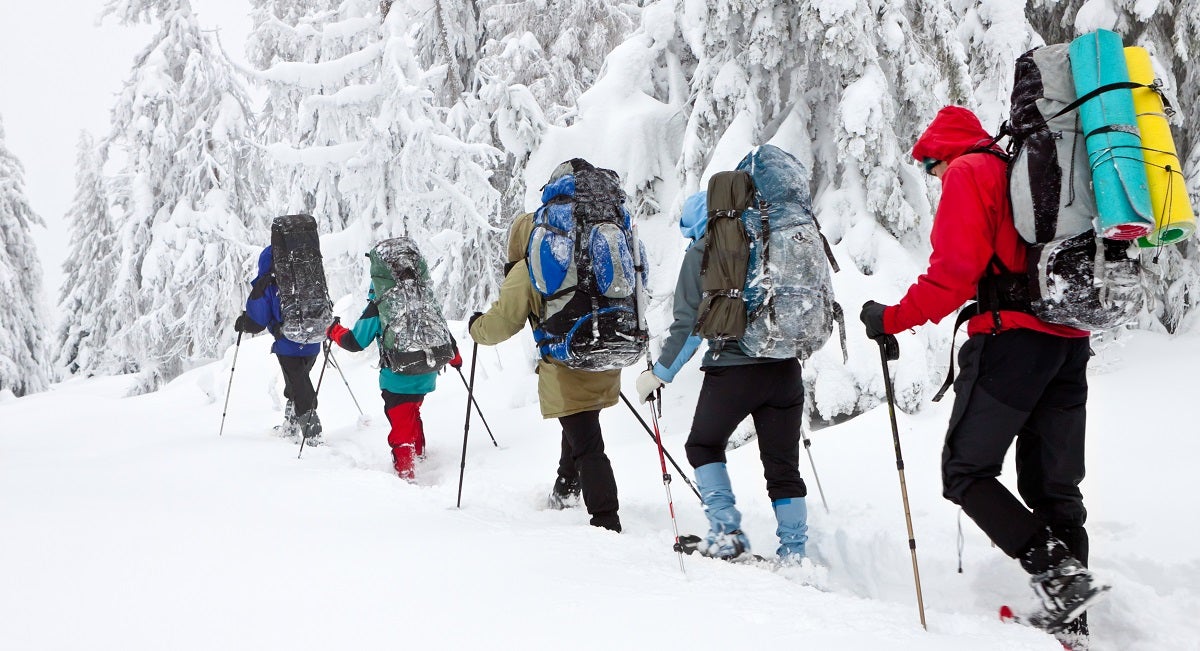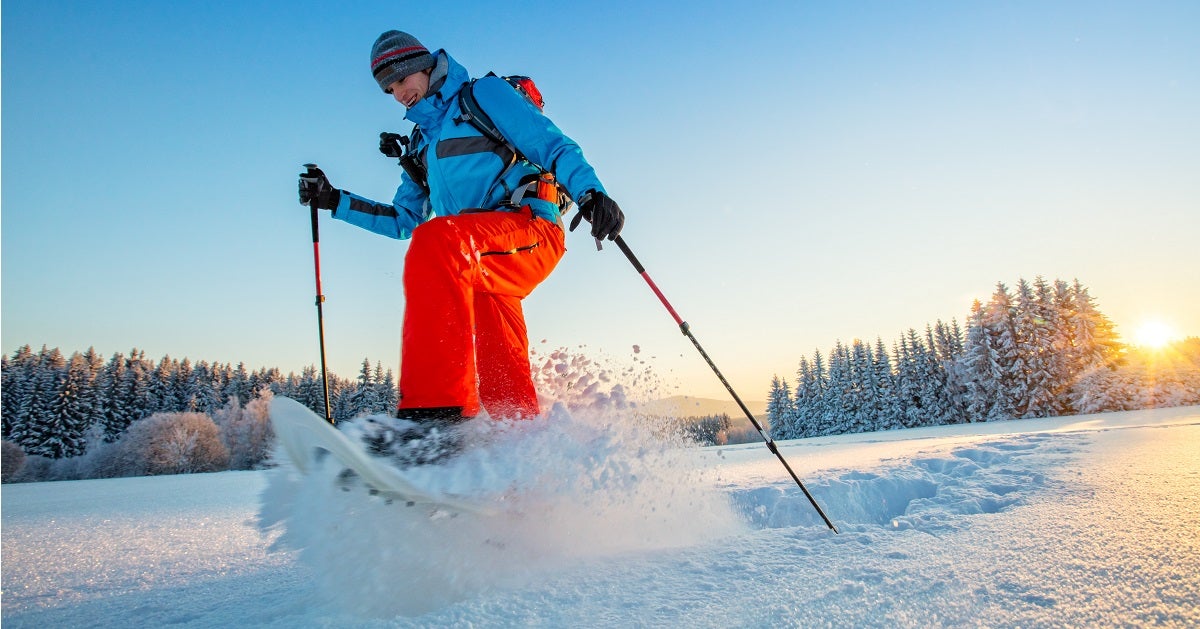
Our Editors independently research, test, and rate what we feel are the best products. We use affiliate links and may receive a small commission on purchases.
Snowshoeing is some of the most fun you can have during the winter season. Not only is it a wonderful way to get out and explore in the wilderness, it’s also an excellent workout and smart form of transportation in the snow.
However, to make the most of your experience there are some pieces of gear that we think are essential to have. We’ve come up with a guide that details all of the essential gear for snowshoeing, so don’t go anywhere!
Snowshoes
Lets start with the most important gear you need, snowshoes! Let’s make sure you pick the right ones for you and the conditions you’ll be using them in.
There are two main frame types: composite and aluminum.
Composite is more effective in compact snow or hard, icy conditions, while aluminum is lightweight and almost “floats” above deep powder. However, if you already have composite frames and need them for powder trekking, you can also add tails on them.
Make sure you know if you prefer fixed-rotation or free-rotation bindings, as well. The former is the most stable, perfect for clearing potential obstacles and walking backwards without making you trip or getting in your way. Free-rotations pivot with the movement of your feet, offering a more natural feel. As they move, they eliminate the risk of snow pile-up which can be a bit annoying while traveling in powder.
Snowshoe Boots
You may be wondering if you can wear your tennis shoes or hiking boots while snowshoeing. Well, we definitely advise against tennis shoes, and your hiking boots may or may not work. What we’re looking for here are boots which are durable enough to provide traction but are flexible enough that they feel natural to walk in and are never painful.
An easy way to avoid all that guesswork is simply by getting yourself a pair of snowshoe boots. These boots are specifically designed for the sport and will offer you the best, most efficient experience possible. These boots are warm enough that you can stay out for hours on end, but roomy enough that your toes and feet never feel squashed.
The uppers are designed to be resistant against rips and tears, while also effectively keeping out snow from falling into your boots each time you take a step. If you have any doubts with if the pair of boots will be compatible with your snowshoes, simply look at the manufacturer and the dimensions.
Backpacks
When you’re snowshoeing, where do you plan on holding all of your belongings? If you’re going to be using your snowshoes to travel out to your cabin, for example, you’ll probably need to take along your smartphone, some cash, a charger, change of clothing, and more. You’re obviously not going to be able to store all this in some pockets.
What you need is a ski and snowboard backpack. These backpacks are made for both sports, but they translate perfectly over to snowshoeing. They are water resistant so you don’t have to even think of anything inside your pack getting ruined by moisture. Not only that, but they feel nice on the shoulders due to evenly distributing the weight.
You’ll regularly find waist straps so you keep the weight close to your body, which will not only help you move easier but will help reduce the risk of shoulder and back pain. These backpacks can fit in a surprising amount of gear inside, and will have pockets for all your electronics, cards, keys, and whatnot.

Avalanche Beacon
This really is only ever going to apply if you’re snowshoeing around in the backcountry, but it’s never a bad idea to carry an avalanche beacon around. As they’re so compact, it’s not really going to take up much room or weight in your pack anyway.
Anyway, these beacons can seriously save your life and you can’t put a price on that. These devices send out a signal can be detected by others with beacons, like your friends, search parties, etc. While they don’t absolutely guarantee your safety from avalanches, they can help rescuers more easily find buried victims. Of course, we highly recommend you actually get trained in how to properly use them.
Hardshell Jackets
We really hope you weren’t planning on going out snowboarding in just a hoodie or light jacket. Just like you wouldn’t wear this snowboarding or skiing, you wouldn’t skimp on clothing while snowshoeing either. In all sports you’re out in the wilderness, and need maximum protection from the elements.
You definitely should layer when out in the snow for hours at a time. We recommend wearing at least 2 layers, but 3 is probably best. Your base layer should fit close to your body, but also be stretchy enough that it moves with you, not against you. This layer will be breathable and very thin, while your mid layer is a bit thicker and more insulating.
To finish off your layers, you’ll have a hardshell jacket on the exterior. This layer is crucial to maintaining dryness and staying warm throughout all of your snowshoeing adventures, as it is waterproof and wind resistant. This will keep snow from permeating through to the layers underneath, and to your skin. We all know how shocking it can be to have a cold gust of wind blow through our clothing, and hardshell jackets prevent that from happening.
Not to mention, they usually come with hoods that can help keep wind and snow out from around the neck area, while protecting the neck, ears, and head.
Survival Gear
While all of the aforementioned items could be considered survival gear, here are a few more things you should add to your pack.
- Compass – Compass’ are older but still very useful, timeless devices that can also help keep you on the right path and avoid getting lost. If you prefer, you can also use a GPS, though compass’ will never run the risk of running out of battery or malfunctioning so it’s good to keep both handy.
- Hydration pack & water filter – Depending on how far out into the wilderness you’re going, it would behoove you to bring along a hydration pack and water filter. This way, you can simply pack some snow in a pot, heat it up with fire, and use the water filter to filter out any unhealthy bacteria, viruses, dirt, and other undesirables.
- Protection – This includes pepper spray, bear spray, etc. While we hope you will never have to use it, it’s always better to be safe than sorry. Again, this will also depend on where you’re going. If you’re snowshoeing around in a place heavily populated with people, then you’re likely not going to need this.
Summary
Now that you know all about the top essential pieces of snowshoeing gear, is there anything you don’t have? We really recommend not leaving anything on this list out for any trip. They’re all important and will all keep you safe, healthy, and comfortable so you can enjoy your snowshoeing experience to the max. We hope our guide has been able to help you out and that you feel more confident moving forward. Thanks for tuning in, and we’ll see you again shortly!
